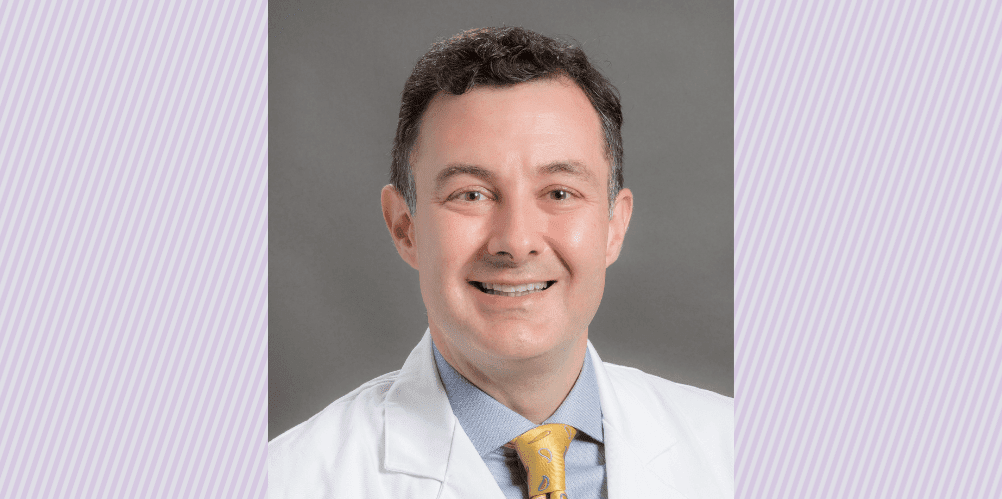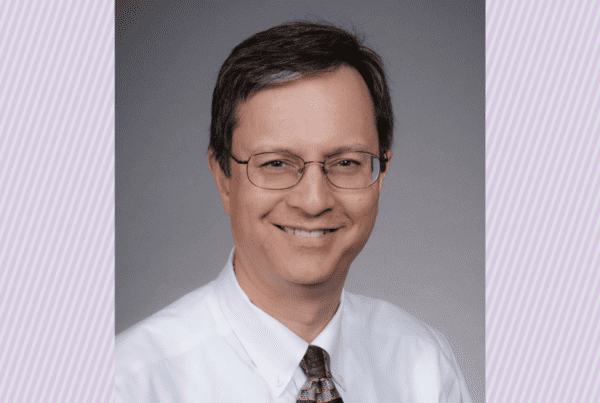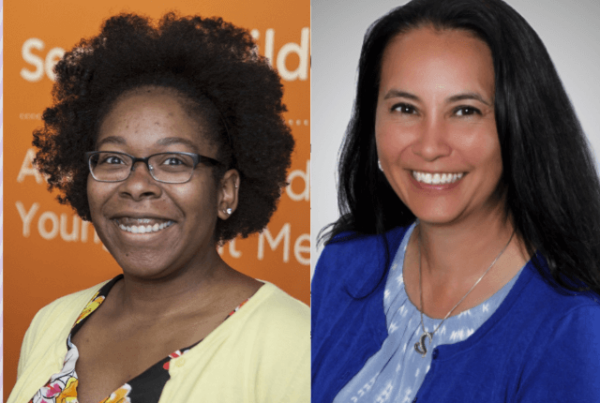Babak Nazer, MD, always had an interest in medicine. But being a doctor wasn’t originally at the top of his career list.
“My draw to medicine started early. I had an initial interest in biomedical engineering and biomedical devices,” says the cardiac electrophysiologist who practices at the Heart Institute at UW Medical Center – Montlake. “I majored in biomedical engineering and considered getting a PhD or entering the medical device industry versus going to medical school.”
An inspiring volunteer experience at Johns Hopkins Children’s Center encouraged Nazer to become a physician. But even as he progressed to cardiology and electrophysiology training, he wanted to maintain his medical device work. Today, he has achieved working in both fields as director of the UW Medicine Translational Electrophysiology Laboratory and the Multidisciplinary Ventricular Arrhythmia program.
The path to cardiology
While an undergraduate, the Child Life Program at Johns Hopkins launched Nazer on his journey to medicine. The national volunteer organization focuses on helping children manage the effects of illness and injury.
“I worked four-hour shifts twice a month for two years,” he says. “We set up social and play-based interactions for children admitted to Johns Hopkins. That experience made me want to pursue clinical medicine.”
Nazer initially focused on pediatrics but soon developed a passion for adult cardiology. He ultimately chose to specialize in electrophysiology, treating arrhythmias (irregular heartbeats) in adults. But he also cares for young adults with congenital heart disease and their associated arrhythmias.
Blending engineering and cardiology
By specializing in cardiology and electrophysiology, Nazer merged his interests in medicine and engineering.
“There are a lot of physics and engineering principles involved in the heart,” he says. “Mechanical engineering and fluid dynamics play a role in blood pressure and blood flow. And electrical engineering concepts are at work with heart rhythm, rate and electrical conduction of the heart.”
Studying the cardiovascular system as an electrical circuit led him to specialize in electrophysiology. Nazer enjoys the complexities of the medical procedures he performs on the heart’s abnormal electrical tissue, such as implanting pacemaker devices to help keep the heart beating in a regular rhythm or defibrillators that deliver an electrical shock to restore heartbeat.
A recent project Nazer’s laboratory and collaborators have been working on is a prototype for a rechargeable pacemaker. Most pacemakers last 6 to 15 years before they must be replaced, and newer “leadless” pacemakers do not have replaceable batteries and are challenging to access when the battery loses charge. The prototype aims to convert the heart’s natural oscillating pressures back into voltage to prolong the device’s battery life, reducing the amount of invasive, high-risk retrieval surgeries for patients.
With his unique background and clinical interests, Nazer specializes in treating patients with life-threatening ventricular arrhythmias (abnormal heart rhythms in the lower heart chambers). He often addresses serious arrhythmias (dangerously rapid heartbeats) — like ventricular tachycardia, ventricular fibrillation or premature ventricular complexes — with ablation procedures that restore normal heart rhythms. In these procedures, the sources of these arrhythmias are carefully identified and burned with a catheter to remove the electrical signal causing the arrhythmia. These patients often also need the implant defibrillators to help kickstart their heart into a regular rhythm.
Putting mental health care at the heart of it
Nazer does more than perform procedures that physically benefit his patients. He also focuses on the mental impacts of having an irregular heartbeat.
“Patients experience physical and psychological effects after a cardiac arrest or receiving a defibrillator shock. Even the anxiety of needing or getting a defibrillator shock takes a huge toll on these patients,” he says. “I enjoy managing their care and helping to reduce the probability of needing future shocks or heart restarts.”
Nazer hopes to recruit a psychologist, psychiatrist or other mental health provider to help his patients manage the mental stress associated with unpredictable heart-restarting defibrillator shocks.
“The fear and anxiety linked to recurrent shocks from a defibrillator can sometimes outweigh the physical toll of the shock itself,” he says. “I have previously worked with a psychologist specifically interested in this patient population and would love to bring a similar resource to help us care for these patients at UW Medicine.”
Engineering techniques for noninvasive cardiac care
With a multidisciplinary team of collaborators at UW’s Center for Industrial and Medical Ultrasound, Nazer’s lab designs, fabricates and tests devices that use ultrasound energy as novel treatments for ventricular arrhythmias (abnormal heart rhythms in the lower heart chambers). This work could lead to less invasive and/or more effective procedures for this patient group.
Traditionally, treatment devices for ventricular arrhythmias use radiofrequency as their energy source. According to Nazer’s team, ultrasound energy may reach deeper into thick ventricular tissue, potentially improving the efficacy of ablation. That depth feature may also make his group’s device an effective tool for treating conditions like hypertrophic cardiomyopathy, a genetic disease that causes thickening (hypertrophy) of the heart muscle. With this condition, the wall between the left and right heart chambers gets too thick and leads to blood flow obstruction out of the heart.
For patients with this condition, major surgery is the most common treatment option.
“Open heart surgery is the typical therapy for hypertrophic cardiomyopathy. Surgeons literally shave off the segment in between the heart chambers and thin it out,” he says. “We realized our ultrasound device could treat deep sources of abnormal heart rhythms. And it could actually shrink the septum wall in patients with hypertrophic cardiomyopathy.”
Contributing to a complex care environment
Nazer brought his expertise in cardiology and electrophysiology to UW Medicine in 2022. What drew him was the environment well-suited to treating complex cases — both for patients and medical professionals. UW Medicine’s multidisciplinary approach to care and five-state range make it a destination for complex cardiac arrhythmia treatment.
“Our patients come from a big geographic area, and they’re from a wide range of ages and backgrounds. Some are younger, but many are older with more complex and chronic arrhythmias,” Nazer says. “We get the most complex of the complex patients, and as a physician, it’s satisfying to treat them.”
As the director of the Ventricular Arrhythmia program, Nazer has several goals he hopes will bolster the high level of care patients already receive at UW Medicine, ranging from expanding treatment options for arrhythmia care through his medical device research to bolstering relationships with mental health colleagues, radiation oncologists for non-invasive treatments, anesthesiologists and surgeons to provide more comprehensive care. He may be treating arrhythmias, but Nazer isn’t skipping any beats.



